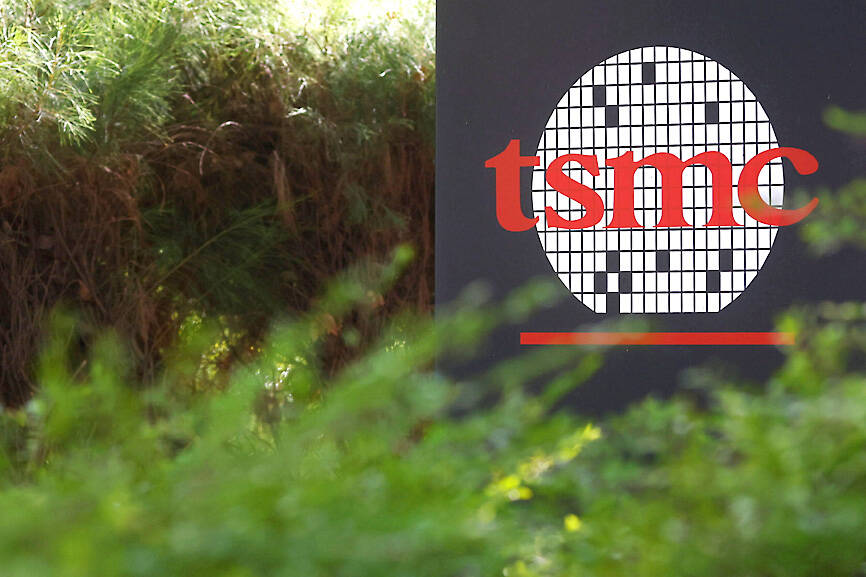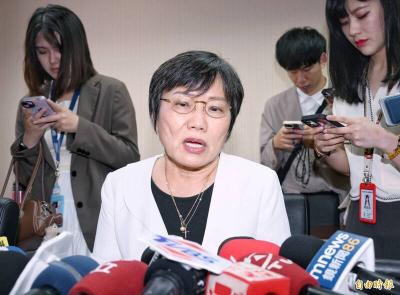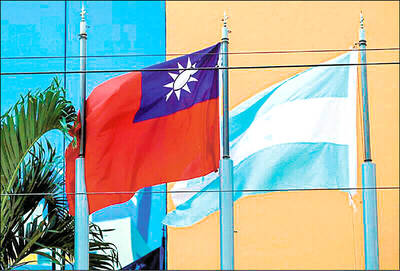Taiwan Semiconductor Manufacturing Co’s (TSMC) application to send about 500 Taiwanese to the US on E-2 visas to work at its Arizona fab would be considered based on laws and procedures, US Senator Mark Kelly said on Friday, in response to criticism from unions in the state.
The US has “a set of laws about who is eligible to receive visas — until those laws change, there’s a process,” Kelly said in an interview in Taipei.
His remarks came after the Arizona Pipe Trades 469 Union filed a petition urging US lawmakers to reject TSMC’s application to bring in the Taiwanese workers on temporary E-2 visas.

Photo Ann Wang, Reuters
While TSMC has said that the workers are needed to train their US counterparts, labor groups in the state have rejected that argument.
In an opinion editorial published by the Arizona Republic and ther Phoenix Business Journal, Arizona Building and Construction Trades Council president Aaron Butler said that TSMC was “blaming its construction delays [on US workers] and using that as an excuse to bring in foreign workers who they can pay less.”
Kelly said there was “access to different types of visa programs for different types of workers under different circumstances.”
“It’s not a matter of somebody going in there and saying: ‘Hey, don’t do that.’ It’s not the way it works,” he said.
He added that TSMC and union leaders had engaged in “direct” and “very productive” conversations over plans to bring in Taiwanese workers.
The E-2 workers would consist of a relatively small group of professionals doing the training and “very sophisticated” work, including installing specific machinery, Kelly said.
“At this point, TSMC and the unions both understand what the situation is, and it’s moving forward very productively,” he said.
He added that he had met with TSMC CEO C.C. Wei (魏哲家) while in Taipei to discuss the situation at the chipmaker’s fab in Arizona, which remains under construction.
“His [Wei’s] goal is to have this small number of individuals train on very specific tasks, so [when] we get to the point where the next fab, and if there’s one after that, it’s not going to require workers coming from Taiwan,” Kelly said.
Regarding TSMC’s announcement that the date for the 4-nanometer fab to begin mass production had been pushed back from late next year to 2025 due to a shortage of skilled labor, Kelly acknowledged there had been some delays.
However, facilities such as TSMC’s Arizona fab were “very complicated factories to build,” he said. “I would argue that they are the most complex factories there are.”
Following comments from TSMC chairman Mark Liu (劉德音) that some of the conditions for securing subsidies under the US’ Creating Helpful Incentives to Produce Semiconductors and Science Act were “unacceptable,” Kelly said that while he was not aware of the specific requirements, he was confident that TSMC’s application would be approved.
“My sense is this is moving along as we intended in [US] Congress and the way that the [US] Commerce Department has planned to implement it, and I don’t get a sense that there have been any major surprises that TSMC has encountered,” he said.
The semiconductor company had been working closely with the US Department of Commerce on its application, he said, adding that he believed the department would be fair in deciding whether to approve the application and the subsidy amount.
Kelly visited Taiwan from Tuesday to Friday with a delegation that included Greater Phoenix Economic Council CEO Chris Camacho.
On Thursday, delegation members signed a memorandum of understanding with Startup Island Taiwan, overseen by the National Development Council, pledging to help Taiwanese set up a presence in the US.

Chinese Nationalist Party (KMT) Chairman Eric Chu (朱立倫), spokeswoman Yang Chih-yu (楊智伃) and Legislator Hsieh Lung-chieh (謝龍介) would be summoned by police for questioning for leading an illegal assembly on Thursday evening last week, Minister of the Interior Liu Shyh-fang (劉世芳) said today. The three KMT officials led an assembly outside the Taipei City Prosecutors’ Office, a restricted area where public assembly is not allowed, protesting the questioning of several KMT staff and searches of KMT headquarters and offices in a recall petition forgery case. Chu, Yang and Hsieh are all suspected of contravening the Assembly and Parade Act (集會遊行法) by holding

PRAISE: Japanese visitor Takashi Kubota said the Taiwanese temple architecture images showcased in the AI Art Gallery were the most impressive displays he saw Taiwan does not have an official pavilion at the World Expo in Osaka, Japan, because of its diplomatic predicament, but the government-backed Tech World pavilion is drawing interest with its unique recreations of works by Taiwanese artists. The pavilion features an artificial intelligence (AI)-based art gallery showcasing works of famous Taiwanese artists from the Japanese colonial period using innovative technologies. Among its main simulated displays are Eastern gouache paintings by Chen Chin (陳進), Lin Yu-shan (林玉山) and Kuo Hsueh-hu (郭雪湖), who were the three young Taiwanese painters selected for the East Asian Painting exhibition in 1927. Gouache is a water-based

Taiwan would welcome the return of Honduras as a diplomatic ally if its next president decides to make such a move, Minister of Foreign Affairs Lin Chia-lung (林佳龍) said yesterday. “Of course, we would welcome Honduras if they want to restore diplomatic ties with Taiwan after their elections,” Lin said at a meeting of the legislature’s Foreign Affairs and National Defense Committee, when asked to comment on statements made by two of the three Honduran presidential candidates during the presidential campaign in the Central American country. Taiwan is paying close attention to the region as a whole in the wake of a

OFF-TARGET: More than 30,000 participants were expected to take part in the Games next month, but only 6,550 foreign and 19,400 Taiwanese athletes have registered Taipei city councilors yesterday blasted the organizers of next month’s World Masters Games over sudden timetable and venue changes, which they said have caused thousands of participants to back out of the international sporting event, among other organizational issues. They also cited visa delays and political interference by China as reasons many foreign athletes are requesting refunds for the event, to be held from May 17 to 30. Jointly organized by the Taipei and New Taipei City governments, the games have been rocked by numerous controversies since preparations began in 2020. Taipei City Councilor Lin Yen-feng (林延鳳) said yesterday that new measures by